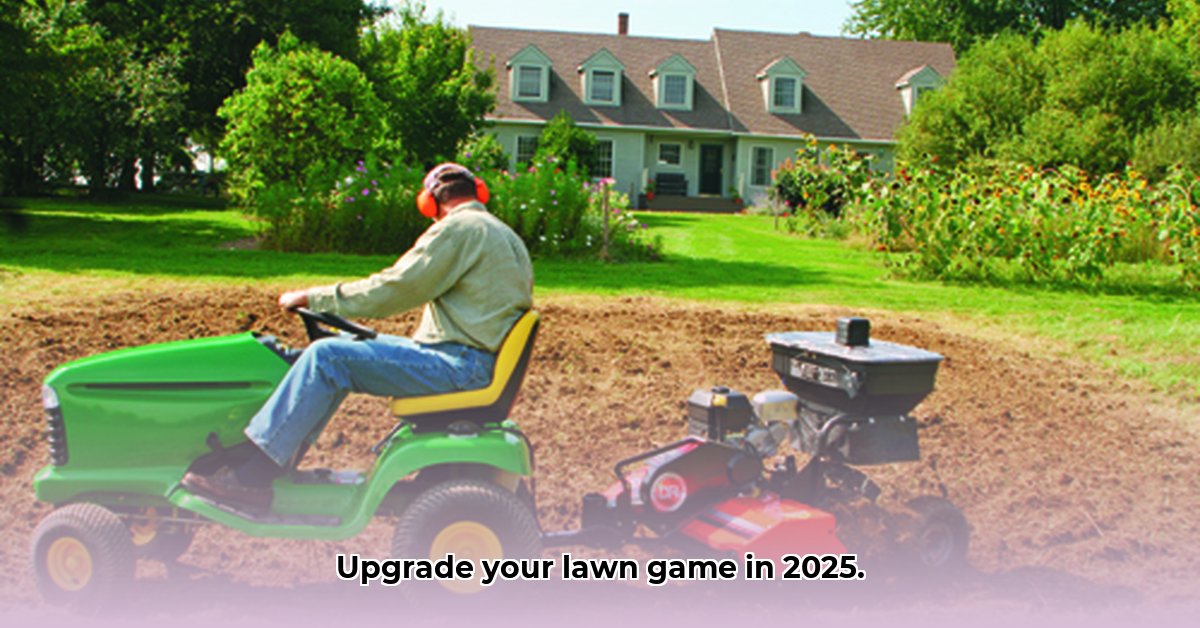
Choosing the right pull-behind tiller for your lawn tractor significantly impacts efficiency and sustainability in your agricultural practices. This comprehensive guide helps you navigate the options available, emphasizing practical advice and sustainable methods. Whether you're a small-scale farmer or a home gardener, we'll equip you with the knowledge to make an informed decision. For more detailed information, check out this helpful resource.
Types of Pull-Behind Tillers
Pull-behind tillers are broadly categorized into three types, each suited for different soil conditions and plot sizes:
Light-Duty Tillers: Ideal for small gardens and lighter soil (sandy loam). They are less powerful but easier to manage and more economical to operate. These are perfect for weekend gardeners or those with smaller plots.
Medium-Duty Tillers: A good compromise between power and ease of use. Suitable for moderately sized gardens and soil types with some clay content. These often present the best balance for many home gardeners and small-scale farmers.
Heavy-Duty Tillers: Designed for large areas and challenging soil (heavy clay, rocky soil). These are powerful machines but demand a sturdy tractor and represent a larger investment. These are the choice for serious tillage needs.
[Diagram showing light, medium, and heavy-duty tillers would be inserted here.]
Key Features to Consider
Several key features differentiate tillers and should be carefully considered before purchase:
| Feature | Description | Importance |
|---|---|---|
| Engine Horsepower (HP) | Measures the tiller's power. Higher HP handles tougher soil but increases fuel consumption and cost. | Choose according to your soil type and plot size. Higher HP isn't always necessary or cost-effective for small plots. |
| Tilling Width (inches) | Width of soil tilled in a single pass. Wider widths cover more ground faster, but may be harder to maneuver. | Match the tilling width to your plot size and tractor's maneuverability. |
| Tilling Depth (inches) | Adjustable depth of tillage. More depth for initial preparation, less for seedbed preparation. | Adaptability to different soil conditions and farming stages is crucial for efficiency. |
| Hitch Compatibility | The tiller's hitch must match your tractor's hitch type. Incompatible hitches render the tiller unusable. | Essential for safe and functional operation; check compatibility before purchase. |
| Safety Features | Shielded tines, guards, and other safety mechanisms reduce risks of injury. | Prioritize operator safety; look for well-shielded models. |
| Maintenance Requirements | Frequency and complexity of required maintenance (greasing, oil changes). | Consider your mechanical aptitude and the availability of parts when making your selection. |
Choosing the Right Tiller: A Step-by-Step Guide
Selecting the ideal tiller involves a systematic assessment of your specific needs:
Step 1: Analyze Your Soil Type:
- Sandy Soil: Easier to till; a light-duty tiller often suffices.
- Clay Soil: Denser and harder to till; a medium-duty or heavy-duty tiller may be necessary, depending on plot size.
- Rocky Soil: Requires a robust heavy-duty tiller; manual rock removal beforehand may be required.
Step 2: Determine Your Plot Size:
- Small Plots (under 500 sq ft): A light-duty tiller is usually appropriate.
- Medium Plots (500-2000 sq ft): A medium-duty tiller provides a good balance.
- Large Plots (over 2000 sq ft): A heavy-duty tiller is often the most efficient option, but your tractor must be powerful enough to handle it.
Step 3: Establish Your Budget:
Light-duty tillers are the most affordable, while heavy-duty tillers represent a significant investment. Balance cost with functionality and your long-term needs. How much are you willing to invest to enhance your farming efficiency?
Step 4: Confirm Tractor Compatibility:
Always verify that the tiller's hitch system is fully compatible with your tractor's hitch. Many retailers publish compatibility charts.
Top Recommendations (With Caveats)
Due to variations in manufacturer quality and performance, specific model recommendations are difficult without further testing. However:
- Small-scale farmers/home gardeners: Consider light- or medium-duty tillers, prioritizing ease of use and low maintenance.
- Large-scale farmers: A heavy-duty tiller is necessary, prioritizing durability and power. Downtime is costly, so easy servicing is crucial. Always consider your investment in relation to potential productivity gains.
Maintenance and Safety
Regular maintenance ensures longevity and optimal performance. Remember these steps:
- Pre-use Inspection: Check for damage to tines, belts, and other components.
- Lubrication: Regularly lubricate moving parts to prevent wear and tear.
- Oil Changes: Follow the manufacturer's recommendations for oil changes.
Safety Precautions:
- Always wear eye protection and gloves.
- Securely attach the tiller to your tractor before operation.
- Clear the area of rocks and debris to protect the tiller and prevent injuries.
Conclusion
Choosing the right pull-behind tiller is crucial for efficient and sustainable farming practices. By carefully considering your soil type, plot size, budget, and tractor compatibility, you can select a tiller that maximizes efficiency while minimizing environmental impact. Remember that regular maintenance and adhering to safety precautions are essential for long-term success.